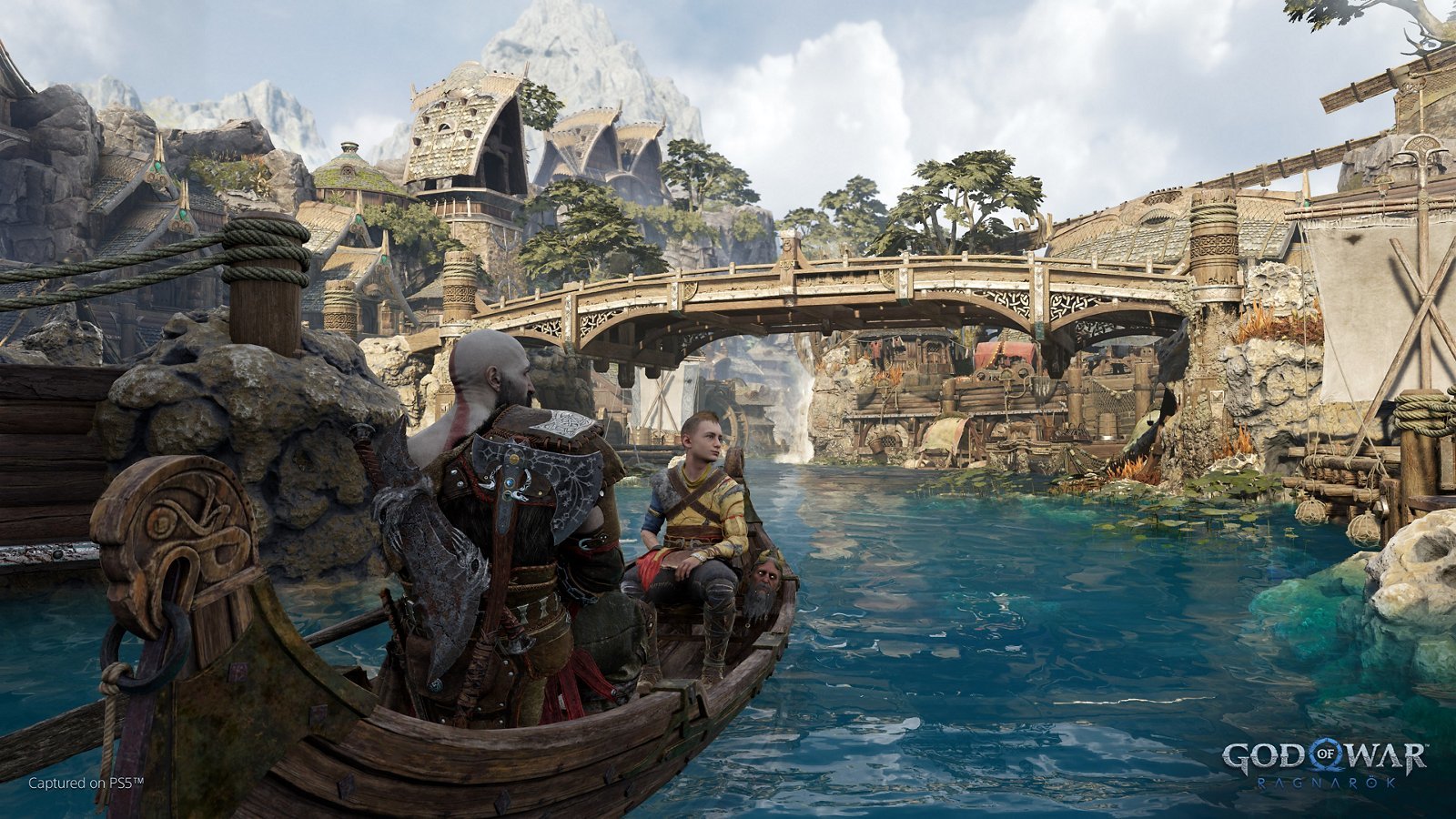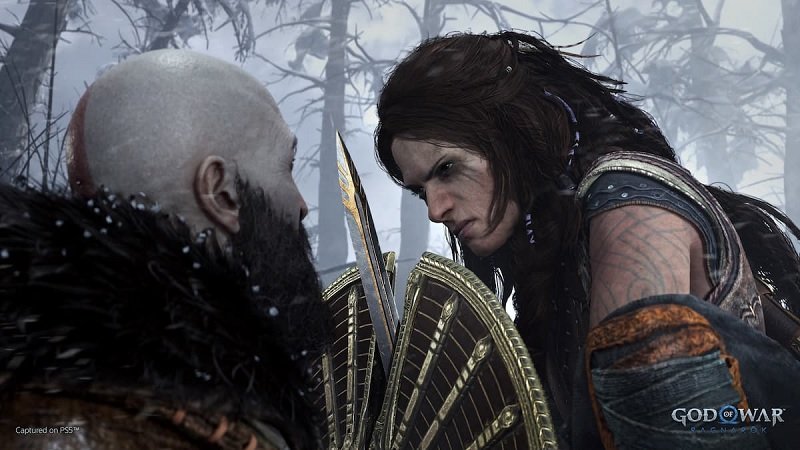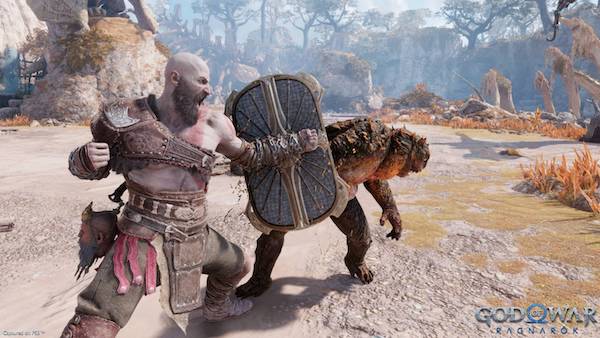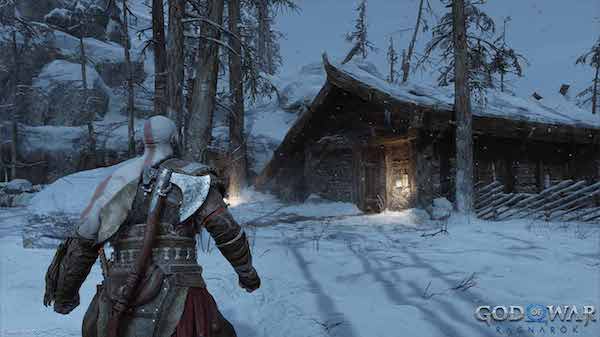Rebooting a popular franchise is a tough job, and that’s made even more challenging when said reboot continues the well known and beloved storyline of its predecessors. That was the task at hand when Sony’s Santa Monica Studio took on development of a new, Norse-themed, God of War game. They were obviously up to the task, though, because the end result was one of the most popular games in recent memory, and of all-time. God of War — a PS4 exclusive that originally launched in 2018 — has remained a constant talking point ever since, and has legions of fans along with great sales numbers, not to mention many excellent reviews. It was a new benchmark for character driven action games, and took a lot of things to a different level, although it wasn’t perfect.
Four years have passed, and the Santa Monica Studio has spent that time on another epic starring Kratos and his son Atreus, which continues their story from the PlayStation 4 phenomenon. Entitled God of War: Ragnarok, it sees our heroes having to deal with the phenomenon known as Fimbulwinter, which has wreaked havoc across the realms. The result has been a constant, unrelenting winter in their home of Midgard, which is covered in mounds of snow and victim to frigid winds. It is said that Fimbulwinter precedes Ragnarok, which will lead to the deaths of great figures and the destruction of the known world, so they have that to look forward to too.
God of War: Ragnarok picks up a couple of years after the events of its predecessor, as Kratos and an older Atreus are hunting a little ways from home. We find Kratos in a cave, where he’s warming up by a fire, and then see the boy bring in a deer that he’s killed. The two decide to head home before skinning it or eating it, though, and that’s when some shit hits the fan during a scene in which the player can control a wolf-led sled team. In fact, this isn’t the only time that you’ll get to do this, but don’t expect it to be a very regular thing.

Not long afterwards, unexpected visitors drive the two from their home and into chaos, in what is predominantly an Atreus driven plot. As you’d expect following the events of the first game, he’s passionate about finding out more about his link to the giants, along with his special heritage and his second name, that being Loki. However, being that he’s young and somewhat impulsive, this causes trouble for a father who fears for his safety and doesn’t usually know the best way to communicate. That is, unless weapons are involved. Thus, we have a father and son who are thrown together by major events, some of which have always been out of their control, but driven apart by teenage angst and a drive for independence which results in Atreus sneaking off and doing his own thing without his scary father knowing.
Our two protagonists get very little rest, and rarely find themselves feeling safe within what is a very tumultuous campaign. One in which they must deal with the hurt and anger residing in Freya, as well as a warning from Odin who seems to have his eyes set on Atreus.
This is a story that features many of the same elements as its predecessor, but also one that carries more personality, character, emotion and inner turmoil than what we’ve previously seen. Simply put, it’s a deeper and richer storyline, which is saying a lot since the storytelling was one God of War 2018’s strongest points. That said, it’s not always as tight as it could’ve been, drags at times, and there’s a lot to take in — so much so that it may be a bit overwhelming. For that reason there’s a recap that is available from the main menu.

In a lot of ways the gameplay is very similar to what came before it. You get access to both of Kratos’ weapons — his frost axe and his fire-infused chains — from the beginning, and can upgrade them independently using different hilts and craftable improvements. Switching between the two is the key to success, because some enemies have related weaknesses, and the same is true for puzzles. Certain puzzles require you to throw the axe to break or freeze things, or have it bounce off of a purple gem; whereas others require you to light lamps, pull environmental items in different directions, swing from one point to another or set brambles on fire. Some of these are environmental, and some allow access to chests, including runic ones similar to those seen in the last instalment. I’ve generally been quite good at those, and thorough to boot, but some of the ones in this game stumped me. I’d find one or two of the things I needed to hit or light, but not the third, or would get confused and give up. Then again, puzzles (in general) are one of my least favourite things about gaming, and one of my weaknesses when it comes to playing them. For instance, my least favourite part of Zelda and Darksiders is the puzzles, and that is true here although most aren’t too difficult or obtuse.
There’s obviously a very heavy focus on melee combat, which is par for the course with this series. You’ll bash and smash your way through lots of enemies, including frog-like monsters, the undead, flying nightmares and different types of elves, and will also come across quite a few mini-bosses, some of which are optional. God of War: Ragnarok is not an easy game, even on normal, and some of these battles can get pretty tense. In fact, there were some optional ones that left me considering giving up on their treasure, or ditching their side quests, but I was finally able to best most of them after multiple tries. To hell with dark elf lords, though.
During combat you’ll have to keep your eye out for yellow and red circles, which indicate that an enemy is about to attack. Yellow means that it’s something less dangerous, which you can usually block, parry or evade. Meanwhile, red is a stronger and mostly impossible to block attack, which you’ll want to really get the hell out of the way of. This involves dodging and rolling. Certain enemies will also chain attacks, so you’ll need to roll a few times before they stop and you can attack again. Meanwhile, some foes use their shields to their advantage and, when they do so, you’ll often see a blue circle. This can only be broken and prevented by double tapping the shield button.
When Kratos fills his rage gauge, he can enter a fit of intense aggression. This leads to a short period of time where your attacks are amplified and are driven home by heavy punches and kicks. Later on, it’s possible to change this from an aggressive, punishing boost, to something that increases your health when you use it, and at least one other option. This is handled through the menu system. Meanwhile, Atreus has his own valor ability, but I won’t spoil it here.

Yes, Atreus is now a playable character who you’ll control during quite a few different segments, such as those I referenced above. He can also perform light and heavy melee attacks using his bow, and can shoot different types of arrows, including a green hued one (which can destroy environmental items that glow green) and purple rift arrows, which can be chained together to cause a reaction. For example, if a puzzle requires you to light a brazier that Kratos’ chains simply cannot reach, you can chain together a few rift arrow portals to get the fire there. Atreus obviously isn’t as powerful, or as much of a brute as his father is, but he’s got some skills and can handle his own in combat. Also, when you’re not controlling him, he can be called upon to shoot arrows at things and can hold enemies in place. Atreus is not the only ally you’ll have at your side, though, and isn’t the only one you’ll be able to direct like this in combat and puzzle scenarios.
Ragnarok is, as expected, a lengthier and meatier game than we played last time. It’s got a large world, which you can often traverse as you please, and allows you to revisit areas that you’ve previously explored. This is helpful because certain areas are impossible to reach, and some puzzles are impossible to complete, the first time around. There are also hidden items, including Odin’s bird spies, which are spread throughout these worlds. Plus, there are side quests to complete in at least most of them. These side quests can be quite in-depth, and can involve trying to to save something or atoning for a sin that was committed by an ally, including the head of Mimir who’s almost always strapped to Kratos’ belt. Mimir talks quite a bit during the game and tells stories, while also alerting the player to danger during combat; something which is highlighted by yellow (caution) and red (you’re about to be attacked and are in danger) arrows that point out enemies who are off-screen.

These in-depth side quests can add a good amount of time to the campaign, and also lead you to areas you otherwise wouldn’t see with special loot. Some of these areas are more challenging than what’s on the main path, and their battles were some of the toughest I encountered. As I mentioned above, I ‘hated’ dealing with the dark elf lords during one of these optional quests. Moving on, there are also favours which you can complete that involve finding a specific orb in a cave or helping someone in another way. These add depth to the campaign, and come with some nice bonuses. However, it all boils down to the fact that, the more you explore the more you’ll benefit. This is a very large game world with lots of hidden nooks and crannies, and if you take the time to walk, run, swing or canoe to almost every part you’ll find things that those who rush will not. Helpful things, not limited to just hacksilver and other crafting materials.
Speaking of crafting and silver, I should note that I wasn’t a big fan of this game’s inventory and upgrade system. I found the menus cluttered, poorly laid out and somewhat confusing, not to mention overwhelming. There are a lot of different hilts and pieces of armor you can craft, upgrade and equip, and then there are runic attacks and buffs you can find, equip and upgrade, and so on and so forth. It’s all a bit much, and isn’t dealt with nearly as well as it could’ve been. Of course, this weapon/elemental skill/armor system is separate from the actual skills, combos and abilities you can unlock through the game’s skill tree. There’s one for the the axe, one for the chains, one for Atreus and so on.
Presentation-wise, God of War: Ragnarok is an absolute home run. Then again, we expected that. It looks great, performs very well and doesn’t lack in any area. In fact, it’s one of the better looking and sounding games I’ve had the pleasure of playing, although I don’t think it’s up to the same level as Horizon: Forbidden West. The voice acting is exceptional, the writing is well above average, and the worlds you visit look stunning, with lots of variety on offer (including annoying killer plants). There’s a beach like area, the harsh Fimbulwinter on Midgard, a more forested area and lots of dark caves, mines, etc. to explore. That said, the faces aren’t always as detailed as I’d expected, and Forbidden West remains at the top of my list.
A special shoutout also needs to be made regarding the exceptional original score, by none other than Bear McCreary. It really suits this experience, and takes it to another level.

At the end of the day, it’s hard to really fault God of War: Ragnarok. It’s intense, exceptional, beautiful and incredibly immersive, not to mention very well made overall. It’s sometimes a bit too puzzle heavy for my liking, though, and the cluttered menu system isn’t enjoyable to deal with. Furthermore, things can be a bit repetitive in terms of combat, but anyone who played the last game will be prepared for that. Plus, it’s not too much of a criticism when the combat is very good overall.
Thus, God of War: Ragnarok is another essential, must-play of a home run from Sony’s Santa Monica Studio. That, as well as another great PlayStation exclusive, which is a reason to get a PlayStation 5. It’s not my favourite game of the year (which is, again, Horizon: Forbidden West), but it’s definitely up there. I won’t argue with those who consider it to be the best, either, because it is truly great.
This review is based on the PlayStation 5 version of the game, which we were provided with via an early review code.

